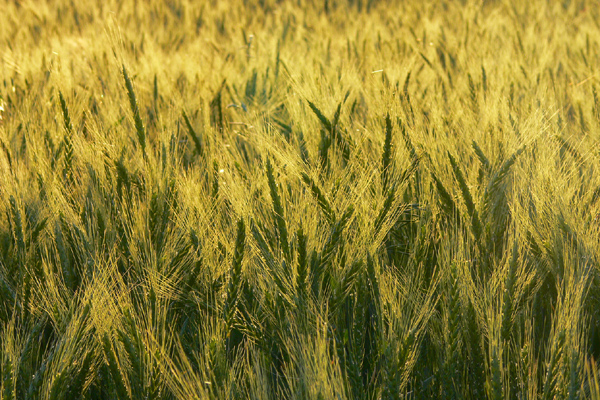
Wheat crops expected to fall this year.
Global crops strong, but Africa states face famine
ROME, March 3, 2017
Global food supply conditions are robust, but access to food has been dramatically reduced in areas suffering civil conflicts, while drought conditions are worsening food security across swathes of East Africa, according to the new edition of FAO's Crop Prospects and Food Situation report.
Some 37 countries require external assistance for food, 28 of them in Africa as a result of lingering effects of last year's El Niño-triggered droughts on harvests in 2016. Yet, while agricultural production is expected to rebound in southern Africa, protracted fighting and unrest is increasing the ranks of the displaced and hungry in other parts of the world, the report said.
Famine has been formally declared in South Sudan and the food security situation is of grave concern in northern Nigeria, Somalia and Yemen.
“This is an unprecedented situation. Never before have we been faced with 4 threats of famine in multiple countries simultaneously,” said FAO assistant director-general Kostas Stamoulis, head of the Economic and Social Development department. “It demands swift action which should consist of immediate food assistance but also livelihood support to ensure that such situations are not repeated.”
In South Sudan, 100,000 people were facing famine in Leer and Mayendit Counties, part of former Unity State, while there was an "elevated risk" that similar conditions existed in two nearby counties. Overall, about 4.9 million people across the country were classified as facing crisis, emergency or famine. That number is projected to increase to 5.5 million, or almost half the country's population, at the peak of the lean season in July.
In northern Nigeria, 8.1 million people are facing acute food insecurity conditions and require urgent life-saving response and livelihood protection. That comes despite the above-average cereal harvest in 2016 and reflects the disruption caused by conflict as well as the sharp depreciation of the Naira.
In Yemen, 17 million people or two-thirds of the population are estimated to be food insecure, while almost half of them are in need of emergency assistance, with the report noting that "the risk of famine declaration in the country is very high."
In Somalia, the combination of conflict, civil insecurity and drought have resulted in more than double the number of people - now estimated at 2.9 million - being severely food insecure from six months ago. Drought has curtailed fodder for pastoralists and the third consecutive season of poor rainfall is estimated to have reduced crop production in southern and central regions to 70 percent below average levels, leaving food stocks depleted.
Conflicts and civil unrest in Afghanistan, Burundi, Central African Republic, Democratic Republic of Congo, Iraq, Myanmar and Syria are also exacerbating food insecurity conditions for millions of people as well affecting nearby countries hosting refugees. In addition, the drought in East Africa in late 2016 has heightened food insecurity in several countries in the sub-region.
Worldwide trends
Cereal production made quite strong gains in the world overall in 2016, with a record recovery in Central America, and larger cereal crops in Asia, Europe and North America.
Looking ahead, FAO's first global wheat production forecast for 2017 points to a 1.8 percent decline from last year's record level, due mostly to a projected 20 percent output drop in the US, where the area sown to winter wheat is the lowest level in over 100 years.
Prospects are favourable for the 2017 maize crop in Brazil and Argentina and the outlook is generally positive for coarse grains throughout the Southern Hemisphere. Prospects for rice are mixed, but it is still too early to make firm predictions for many of the world's major crops.
Maize harvests in Southern Africa, slashed by El Niño, are forecast to recover this year, with South Africa's output expected to increase by more than 50 percent from 2016, with positive trends likely in most nearby countries. However, an outbreak of armyworms, along with localized flooding in Mozambique, Zambia and Zimbabwe, could limit larger production gains in 2017.
The 37 countries currently in need of external food assistance are Afghanistan, Burkina Faso, Burundi, Cameroon, Central African Republic, Chad, Congo, Democratic People's Republic of Korea, Democratic Republic of the Congo, Djibouti, Eritrea, Ethiopia, Guinea, Haiti, Iraq, Kenya, Lesotho, Liberia, Libya, Madagascar, Malawi, Mali, Mauritania, Mozambique, Myanmar, Niger, Nigeria, Pakistan, Sierra Leone, Somalia, South Sudan, Sudan, Swaziland, Syria, Uganda, Yemen and Zimbabwe. - TradeArabia News Service







